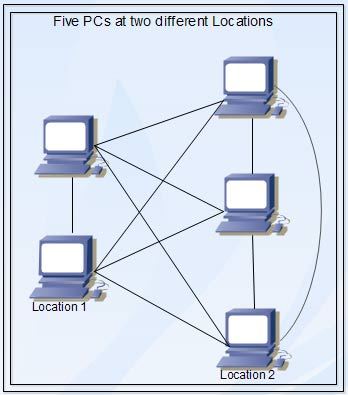The point-to-point scheme provides separate communication channels for each pair of computers. When more than two computers need to communicate with one another, the number of connections grows very quickly as number of computer increases. Above figure illustrates that two computers need only one connection, three computers need three connections and four computers need six connections.
The point-to-point scheme provides separate communication channels for each pair of computers. When more than two computers need to communicate with one another, the number of connections grows very quickly as number of computer increases. Above figure illustrates that two computers need only one connection, three computers need three connections and four computers need six connections.
As the Figure illustrates that the total number of connection grows more rapidly than the total number of computers. Mathematically, the number of connection needed for N computers is proportional to the square of N.
Point-to-point connections required = (N2 (N)/2.
Adding the Nth computer requires N·l new connections which becomes a very expensive option. Moreover, many connections may follow the same physical path. Figure shows a point- to-point connection for five computers located at two different locations, say, ground and first floor of a building.

As there are five PCs, total ten connections will be required for point-to-point connection. Out of these ten connections six are passing through the same locution and thereby making point-to-point connection an expensive one. Increasing the PC by one in the above configuration at location 2 as shown in Figure will increase the total number of connections to fifteen. Out ‘of these connections eight connections will pass through the same area.
 Dinesh Thakur holds an B.C.A, MCDBA, MCSD certifications. Dinesh authors the hugely popular
Dinesh Thakur holds an B.C.A, MCDBA, MCSD certifications. Dinesh authors the hugely popular